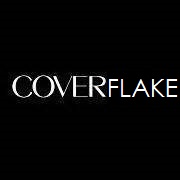Friday, June 5, 2015
By:
Now that I am all settled into NIST my project has gotten off the ground. As a quick reminder I am working on the fabrication of a solid state nano-sensor for identifying biomolecules in solution. The nano-sensor will consist of a silicon substrate topped with and layer of SiO2. Atop that will be a layer of the transistor material, MoS2 which will form the sensing layer of the device. My mentor had a supply of MoS2 flakes that come stuck to a piece of special blue tape. The first major step is to characterize the flakes using optical microscopy so we can identify which ones are CoverFlake material!

But to do that we first have to transfer them to a silicon substrate. This was acheived using the incredibly intricate, mind-blowingly complex technique of pressing the tape against the substrate and peeling it back off. With the substrate under the microscope I scanned the over the entire substrate in search of flakes of the desired size. Once I found one I played with all the focusing settings and software tricks to get the clearest picture of the flakes. I then brought that picture into AutoCAD, which is a type of 3D modeling software, and practiced overlaying the photograph of the substrate containing the flakes with a pattern of markers that will let us see where on the substrate the flakes is located. Using AutoCAD has been a tedious but rewarding experience. I have also learned how to use an atomic force microscope (AFM). This is a tool that is used to measure the topography of a surface. It consists of a super fine tip that vibrates up and down just above the surface of a sample. The repulsive Van der Waals forces between the tip and the sample surface keep the tip hovering just above the sample surface as the topography changes. This technique will allow us to see if our MoS2 flakes are of the desired thickness.
The next day brought back memories of chemistry lab. I learned the process for transferring MoS2 flakes from one substrate to another. I was surprised how much of this technique relied on having steady hands. It was a lot of fun to see how techniques from physics as well as chemistry play a role in device creation. I’m looking forward to next week when I will learn to use even more equipment!
Teresa Turmanian
